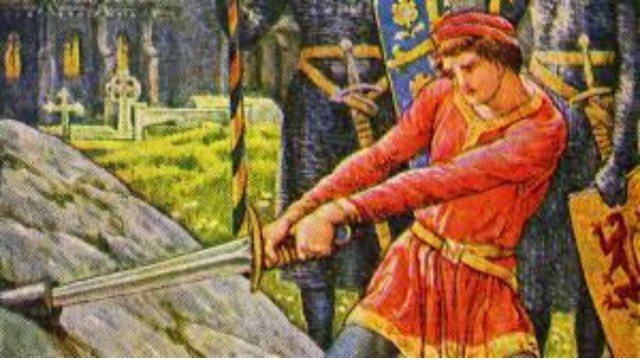The Legend of King Arthur, Pseudo-History or Fact? His historical validity has been widely disputed by historians for centuries, the validity and legality of the king’s existence have been debated, and yet the results are inconclusive. There are a limited number of historical documents and resources available to them, and due to the alleged event occurring over a millennium ago, many historians’ conclusions are highly subjective. Whether you’re a believer or not, there’s no denying that the story of the King of the Dark Ages is one we hold close to our hearts as proud Britons.
Found in Welsh histories
The first piece of literature to mention Arthur’s name is a Welsh poem called Y Gododdin, dating from between the 7th and 11th centuries. The translated version of the poem talks about a warrior named Gwyrddur and says, Gwyrddur was skilled in killing his enemies. Although there is little evidence, this means that there was once an incredibly skilled warrior named Arthur who represented the gold standard of warriors. Some historians argue that Arthur was a legend forged from the works of many different people; There is at least one historical warrior on whom the legend could have been based.

Literature claims King Arthur
Another piece of literature that claims to be the first mention of Arthur’s name is the Annales Cambriae, or Easter Annals, a set of Welsh manuscripts. The first entry of the manuscript reads, “The battle of Badon, in which Arthur bore the cross of our Lord Jesus Christ on his shoulders for three days and three nights, and the Britons were victorious.” However many historians reject this, as the history was compiled from a variety of sources and compiled in the 12th and 13th centuries.
A work by another Welsh monk called Historia Brittonum, or History of the Britons, was written in the early 9th century and contains details of 12 battles in which Arthur took part during his lifetime. The book depicts Arthur as more of a military commander than a king and states, “The generous Arthur, with all the kings of Britain and with military force, fought against the Saxons.” The author adds: “Twelve times he was chosen their commander, and as many times he was their conqueror.”
Brave and Courageous King
Furthermore, Arthur is named “Dux Bellorum”, or military commander, which sees him as more of a military leader than a ruler. The main issue with this book is that in some cases the places named do not share names with places that currently exist, for example, the Glennie River, the Douglas River in the area of Linnaeus, and the Bassas River. Furthermore, the mighty Arthur is said to have not only survived these 12 battles but goes into detail: at the Battle of Mount Badon “nine hundred and forty by his hand alone Fell”. This account comes across as a work of fiction rather than fact.
Where is King Arthur buried?
Many wonderful stories in early Welsh literature form an important part of the Arthurian tradition. Arthur is depicted in anonymous Welsh poetry in 13th and 14th-century manuscripts. In one of the poems of the Black Book of Carmarthen, Anglinn y Beddau (‘The Stanzas of the Graves’), Arthur’s grave is described as a great wonder because no one knows where it is located. But still it is an unsolved mystery that whether King Arthur existed in real or not ?
